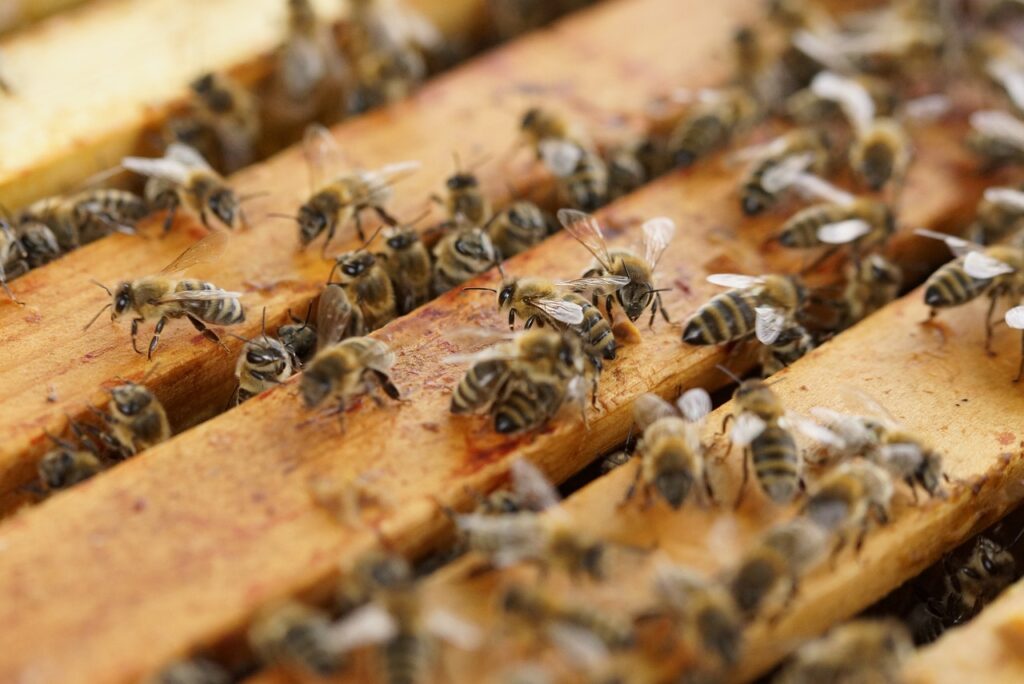As the concrete jungle expands and green spaces dwindle, urban beekeeping is emerging as a blooming trend among environmentally conscious city dwellers. If you’re a nature lover, a sustainability enthusiast, or just curious about the world of bees, this article will be your guide to navigating the fascinating realm of urban beekeeping. We’ll explore what urban beekeeping is, the myriad benefits it offers, how to get started, the types of urban beekeeping kits available, and valuable tips to help you become a successful urban beekeeper. So, put on your beekeeping suit (not literally), and let’s embark on this sweet journey into the heart of the city’s hives.
What is Urban Beekeeping?
Urban beekeeping, as the name suggests, is the practice of keeping and nurturing bee colonies within an urban environment. It’s all about bringing these industrious little pollinators to the heart of the city, where they can contribute to local biodiversity, produce honey, and help combat the decline of global bee populations. Now you may think that bees won’t survive in the city, but actually this is far from true and urban bees actually have a better winter survival rate than their rural counterparts and actually produce more honey in their first year too!
The Benefits of Urban Beekeeping
Environmental Benefits:
Pollination Powerhouse: Bees are essential pollinators, and urban beekeeping contributes to the pollination of local plants and gardens, helping to increase crop yields and enhance green spaces in the city.
Biodiversity Boost: Maintaining bee colonies in urban areas supports a diverse range of flowering plants, creating habitats for other beneficial insects and wildlife.
Economic Benefits:
Local Honey Production: Urban beekeepers can harvest their own honey, reducing the need for commercially produced honey that may have a larger carbon footprint. And, if you produce more than you need – then onshare to friends, family or even the local market!
Beeswax and Other Products: Aside from honey, beekeeping yields beeswax, propolis, and royal jelly, which can be used for various purposes, including crafting, skincare, and even medicinal applications.
Societal Benefits:
Educational Opportunities: Urban beekeeping can serve as an educational tool, teaching city residents about the importance of bees and the natural world.
Community Building: Beekeeping can foster a sense of community and collaboration among urban residents, as beekeepers often share their knowledge and experiences.
How to Start Urban Beekeeping
Starting your urban beekeeping journey requires careful planning and a few essential steps:
Learn the Basics: Begin by educating yourself about bees, their behavior, and the components of a beehive. A good beginners guide to beekeeping can really help you find your way, or alternatively consider taking a beekeeping course or workshop.
Check Local Regulations: Research local laws and regulations regarding beekeeping. Some cities have specific guidelines and permit requirements for urban beekeeping.
Choose a Suitable Location: Select a beekeeping site that offers access to forage areas, protection from wind, and adequate sunlight. Rooftops, balconies, or community gardens can be excellent options.
Acquire the Necessary Equipment: Invest in essential beekeeping equipment, such as a bee suit, smoker, hive tool, and beehive components. There are various types of urban beekeeping kits available, making it easy for beginners to get started.
Types of Urban Beekeeping Kits
Langstroth Hive: This traditional hive design is commonly used by beekeepers. It features removable frames for easy inspection and honey extraction.
Top Bar Hive: This user-friendly hive design is well-suited for urban beekeepers, as it requires less maintenance and is generally easier to handle.
Flow Hive: The Flow Hive is a modern innovation that simplifies honey extraction. It’s suitable for urban beekeepers who want a hassle-free honey harvesting process.
Tips to Become a Successful Urban Beekeeper
Regular Hive Inspections: Consistent hive inspections are crucial for monitoring the health and well-being of your bee colony. Check for diseases, pests, and sufficient food stores.
Proper Feeding: Be prepared to feed your bees if natural forage is limited in the city. Sugar water and supplemental food sources can help your colony thrive.
Maintain a Water Source: Ensure your bees have access to clean water, as they need it for their survival and to cool the hive during hot weather.
Stay Informed: Stay updated on the latest beekeeping practices and be aware of potential environmental threats to bees, such as pesticides.
Share the Love: Educate your community and raise awareness about the importance of bees. Encourage your neighbors to plant bee-friendly flowers and avoid using harmful pesticides.
Sustainably Sweet Success
Urban beekeeping is more than a hobby; it’s a commitment to the environment, the community, and the well-being of our buzzing friends. By bringing bees into the city, you not only enrich your own life but also contribute to a healthier, more sustainable urban ecosystem. So, grab your urban beekeeping kit, don your bee suit, and get ready for a sweet journey that’ll have you savoring the fruits of your labor while making a positive impact on your city and the world.



